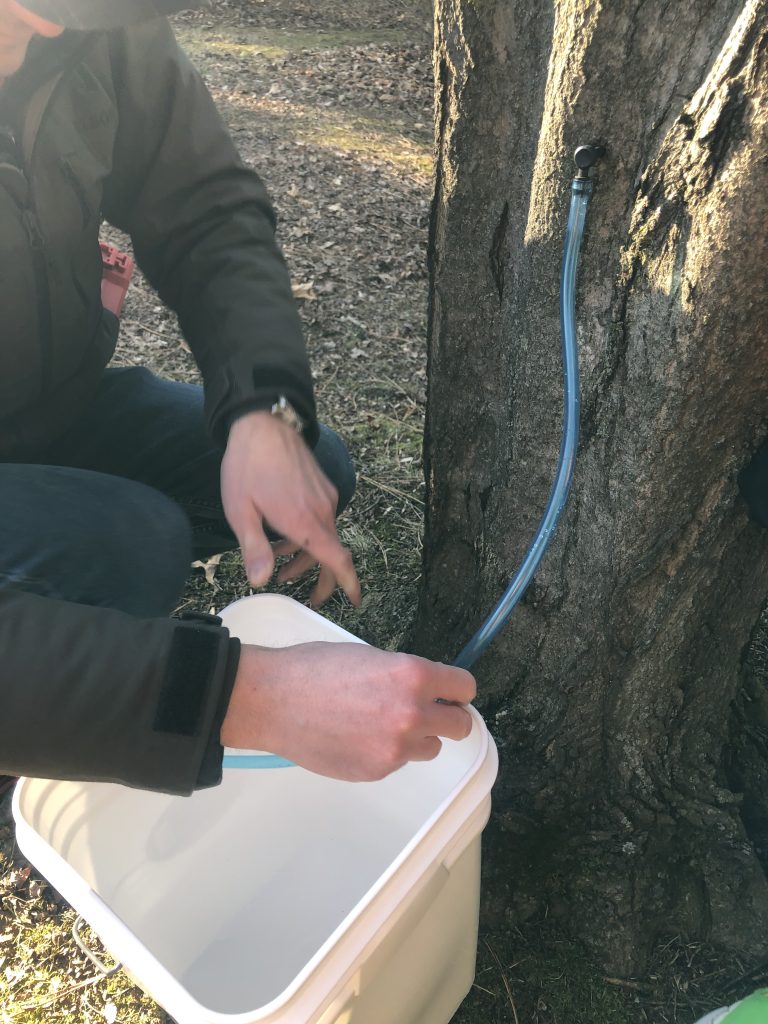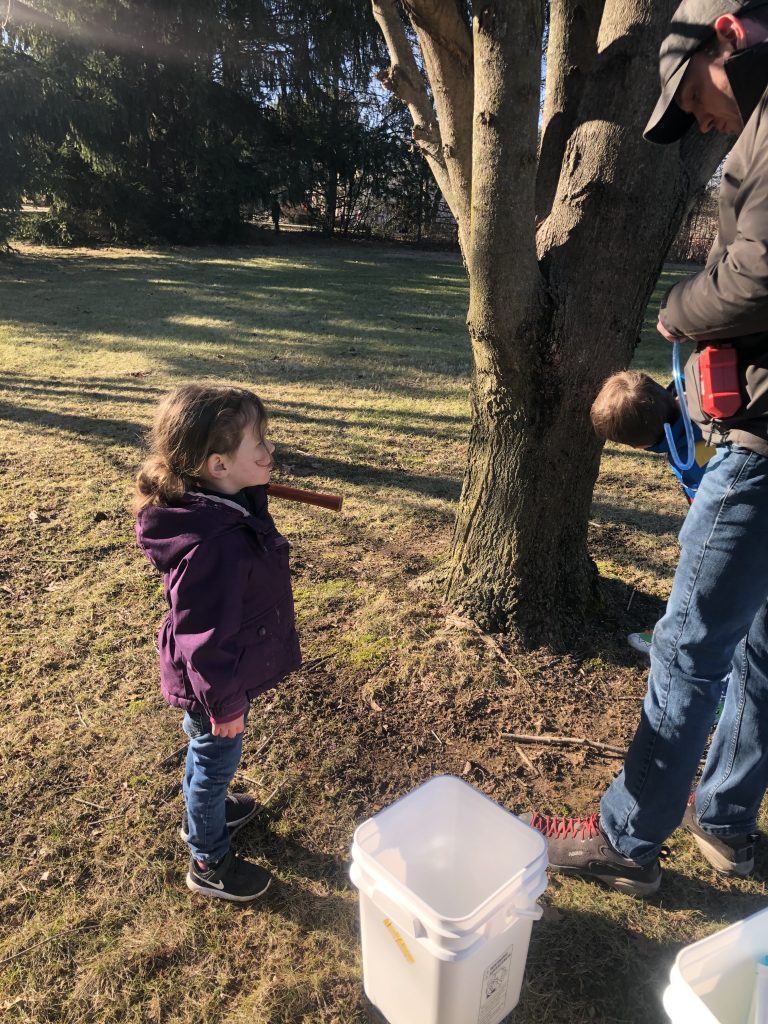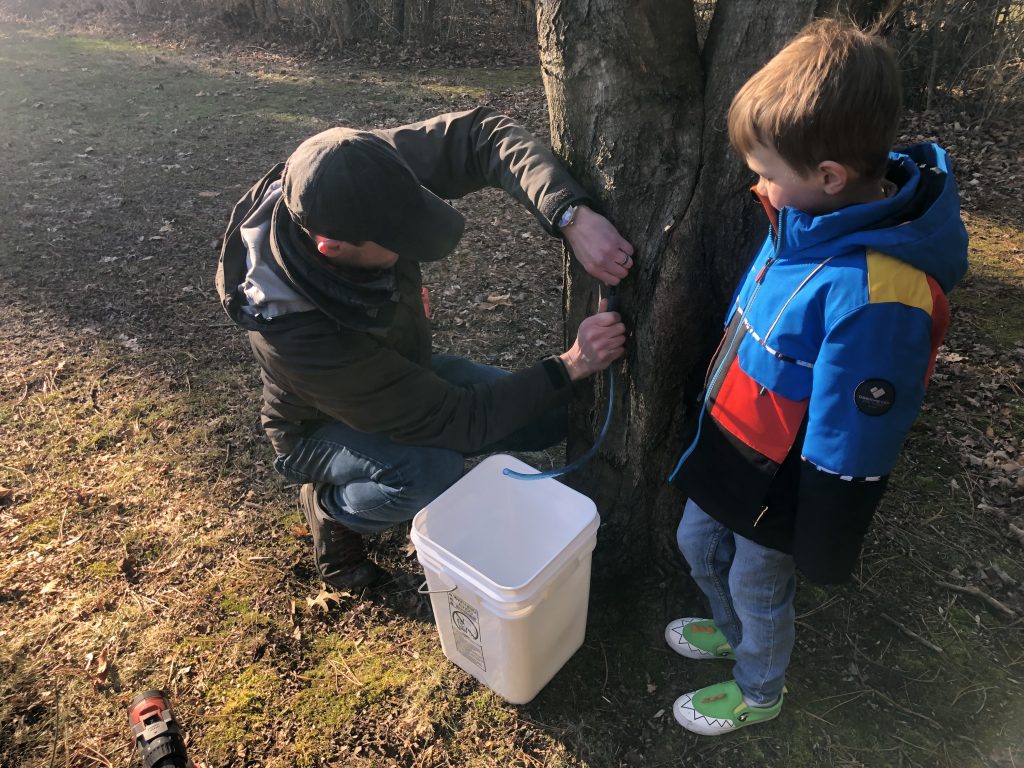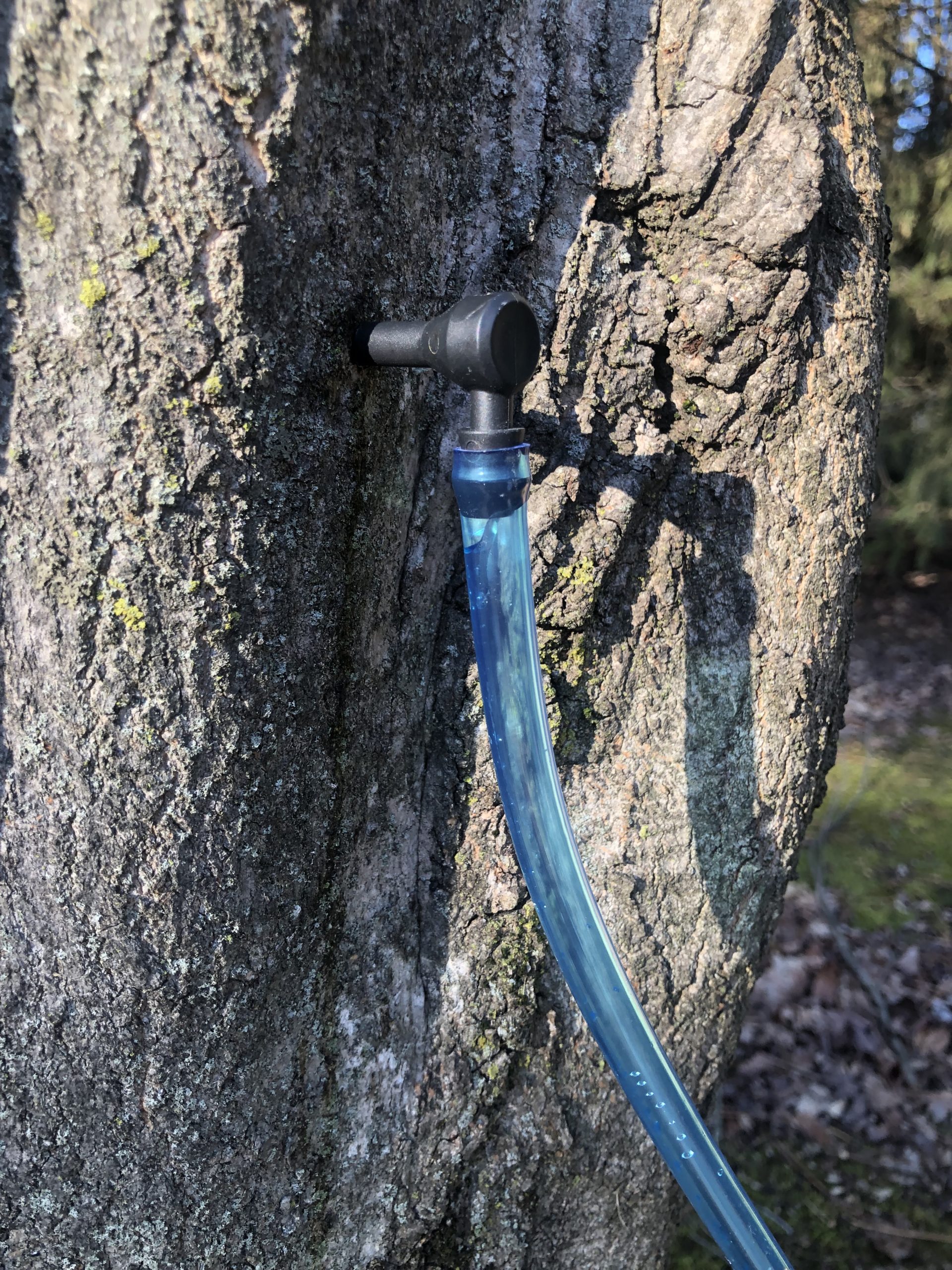I’d initially planned on waiting until closer to the end of February to start tapping the trees, but once I took a look at the weather this week I decided now’s the time!
The temperatures this week are in the mid 20’s Fahrenheit at night and mid to upper 40’s Fahrenheit during the day. What I look for are temperatures below freezing at night and above freezing during the day, and ideally with a 20 degree difference between them.
The reasoning for that is for how the tree distributes sap. When it is cold, the sap is stored predominately in the roots, but when it is above freezing, it rises up from the roots to be sent up the trunk and out through the branches. The up and down motion is what causes the sap to flow out when it is tapped.
Any kind of maple can be tapped for sap – we have a mixture of sugar and silver maples on our property that we use. It’s very important to make sure that they are the correct size ahead of time so you don’t injure your tree. In order to use one tap, the tree must measure 31 in.-57 in. circumference on the trunk. A tree 57 in.-75 in. circumference can have two taps. Most websites will tell you to use a 5/16 drill bit, but our smaller plastic spiles only needed a 15/64 drill bit for a proper, tight fit.
Once we drilled the first hole, I knew I made the right call. The sap started flowing out immediately.
So we got our spile gently hammered into the pre-drilled hole, connected our tubing, and guided the tubing into our food-safe bucket.

The kids were eager to help so they were assigned jobs of carrying a bucket and handing us the rubber mallet to hammer in the spiles.

We went to each of the trees that I had previously measured and searched for the healed over wound from last year’s syrup season. Once we located it, we drilled the new hole about 6 in. horizontally away from the wound, and vertically offset it by a few inches to help prevent girdling of the tree, which would eventually lead to its death.
We cut things a bit too close to dinner time today so we could only get 5 trees tapped, but we will be doing more tomorrow, as well as experimenting with tapping our black walnuts as well.

After dinner, I decided to check the buckets and there was already about 1/2 – 1 inch of sap in each of the buckets already, so we should have enough to do our first boil tomorrow!
Because we are a small hobbyist, we don’t have a big outdoor setup over a wood fire or a sugar shack. We slowly boil down over time throughout the day so the moisture released is no different than simmering a pot of stock for hours on end to make a good bone broth.
As we increase production, we’ll need to get an outdoor setup to accommodate all of the moisture released in boiling large volumes of sap.

